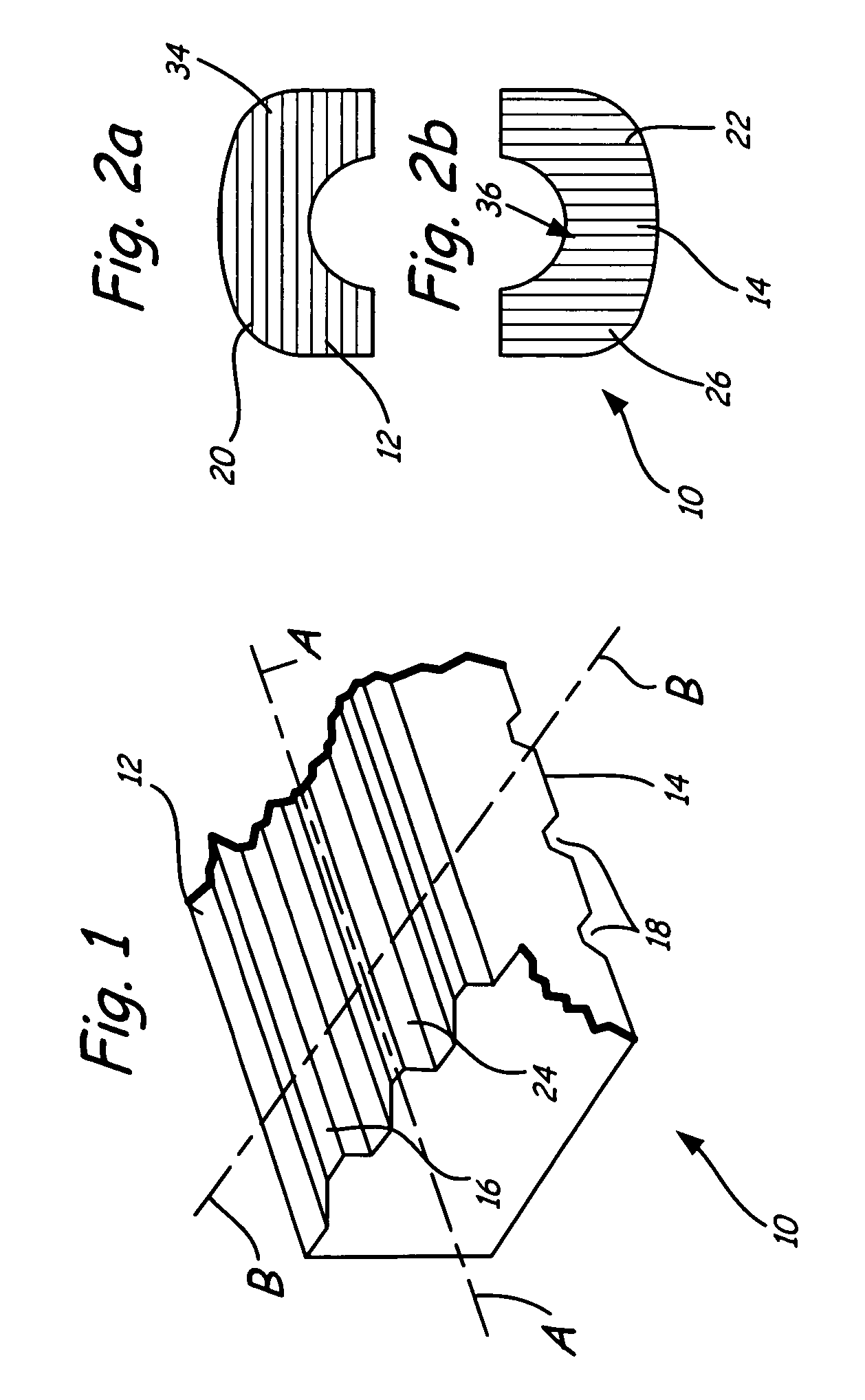Bioimplant with nonuniformly configured protrusions on the load bearing surfaces thereof
- Summary
- Abstract
- Description
- Claims
- Application Information
AI Technical Summary
Benefits of technology
Problems solved by technology
Method used
Image
Examples
Embodiment Construction
[0029] Referring to FIGS. 1 and 2, a surgical bioimplant 10 useful as an intervertebral implant is provided with load bearing surfaces typically juxtaposed with end plates of adjacent vertebrae (not shown) and configured to improve stabilization of the implant at the surgical site by gradually fusing the bearing surfaces with the end plates. The term “bioimplant” as used herein, refers to an implant comprising cortical and / or cancellous bone, from autograft, allograft or xenograft origin, which is processed for implantation into a living patient. The term “stability” as used herein, refers to the ability of the textured bioimplant to remain at an implantation site without significantly shifting, rotating, or being extruded.
[0030] Note, however, that implant 10 may be manufactured from other suitable implant materials, which are capable of withstanding the compression and torsional loads. Among others, such material may include composites of Hydroxyapatite, calcium carbonates, calci...
PUM
 Login to View More
Login to View More Abstract
Description
Claims
Application Information
 Login to View More
Login to View More - R&D
- Intellectual Property
- Life Sciences
- Materials
- Tech Scout
- Unparalleled Data Quality
- Higher Quality Content
- 60% Fewer Hallucinations
Browse by: Latest US Patents, China's latest patents, Technical Efficacy Thesaurus, Application Domain, Technology Topic, Popular Technical Reports.
© 2025 PatSnap. All rights reserved.Legal|Privacy policy|Modern Slavery Act Transparency Statement|Sitemap|About US| Contact US: help@patsnap.com



